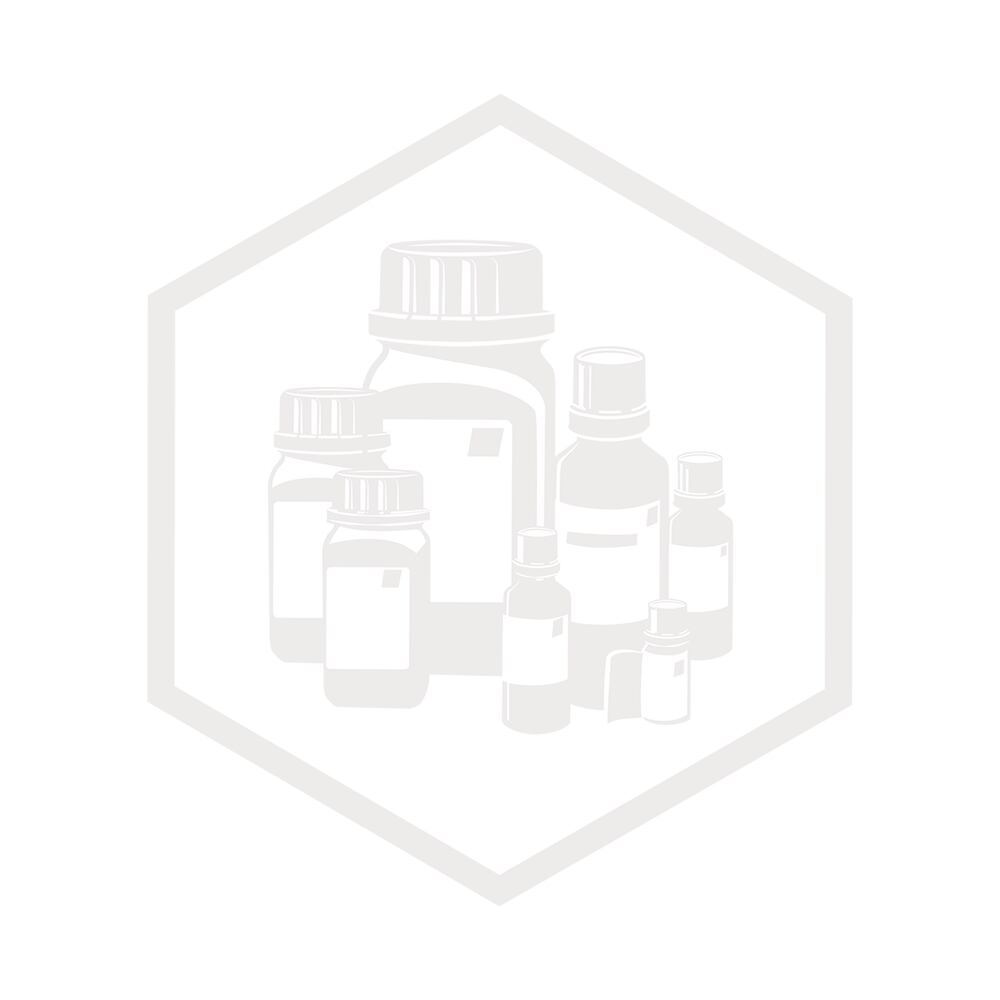product.details.print
DEAE Dextran, 25 g
WGK 1
CAS No. 9013-34-7
Stock solution: 50 mg/ml in H2O. Autoclave.
End concentration: 1 mg/ml (transfection for 30-90 min.) or 250 µg/ml (transfection for up to 8 h)
75,15 €/VE
Excl. btw | 25 g Per VE
Bestelnr. 4198.1
Productdetails
DEAE Dextran for biochemistry
DEAE is the oldest transfection reagent known. The method of complexation of plasmid DNA with diethylaminoethyldextran has been published in 1968 by McCutchan. Positively charged DEAE binds negatively charged DNA to aggregates, which then bind to negtively charged surface structures of cell membranes. Uptake is done via endocytosis. This DEAE method needs only little amounts of DNA, while resulting in high transfection efficiency of up to 30 %. However, the cytotoxic effects caused by DEAE allow only transient transfections. The following cell lines are well transfectable: CV-1, BSC-1 and COS cells, and other stabile, insensitive cell lines.
Stock solution: 50 mg/ml in H2O. Autoclave.
End concentration: 1 mg/ml (transfection for 30-90 min.) or 250 µg/ml (transfection for up to 8 h)
- Tussentotaal: 0.00
| Bestelnr. | VE | Verp. | Prijs | Hoeveelheid | |
|---|---|---|---|---|---|
| 4198.1 | 25 g | plastic |
75,15 € |
|
|
| 4198.2 | 100 g | plastic |
246,20 € |
|
|
|
Op voorraad
Beschikbaar
In bestelling
Niet meer verkrijgbaar
Leveringsdatum onbekend
|
|||||
- Tussentotaal: 0.00
Downloads / MSDS
Algemene informatie
Carbohydrates or Saccharides make up 50 % of the dry biomass of the earth and are therefore the most frequent class of biomolecules. Besides at least two hydroxy groups, they also have an aldehyde or a ketone group and can be subdivided according to the number of monomeric components in mono-, di-, oligo and polysaccharides.
Whereas mono-, di- and oligosaccharides are soluble in water, taste sweet and are therefore called as sugar, polysaccharides are hardly, or not at all, soluble in water and have a neutral taste.
Carbohydrates, together with fats and proteins make up a large percentage of nutrition. In addition to their central role as an energy source, they are also an important structural component especially in plants (e.g. Cellulose). Ribose, a monosaccaride with five carbons (C5H10O5) is an essential element of coenzymes (such as ATP, FAD and NAD) and a structural component of RNA. Desoxyribose (a ribose derivative) is a structural component of DNA.
Dextrans are highly branched macromolecular biopolysaccharides. They consist exclusively of glucose monomers and belong to the homoglycans.
Natural dextrans have molecular masses between 10 and 50000 kg/mol. Dextrans are soluble in water, whereby the solubility depends on the molecular mass. Here, highly viscous, gel-like liquids are formed. Due to the very broad molecular mass distribution of the various dextrans and the associated differences in terms of solubility in water, dextrans have numerous applications.
Thanks to their special properties, dextrans play an important role in many areas. For e.g. dextrans are used in chromatography, both as a carrier in affinity chromatography and (in modified form) for Gel Permeation Chromatography (GPC). Furthermore, they are used as a measurement standard in membrane technology and in adhesives as well as coatings, or as an auxiliary material for paper and textile manufacture.
Analysecertificaten
Type analysis
| Appearance | white to creamcoloured powder |
| Loss on drying | ≤10 % |
| pH value (5 % in water) | 5.0-7.0 |
| Nitrogen content (N) | 3.0-3.8 % |
| Sulphated ash | ≤2 % |
| Free DEAE-Cl | ≤0.002 % |

